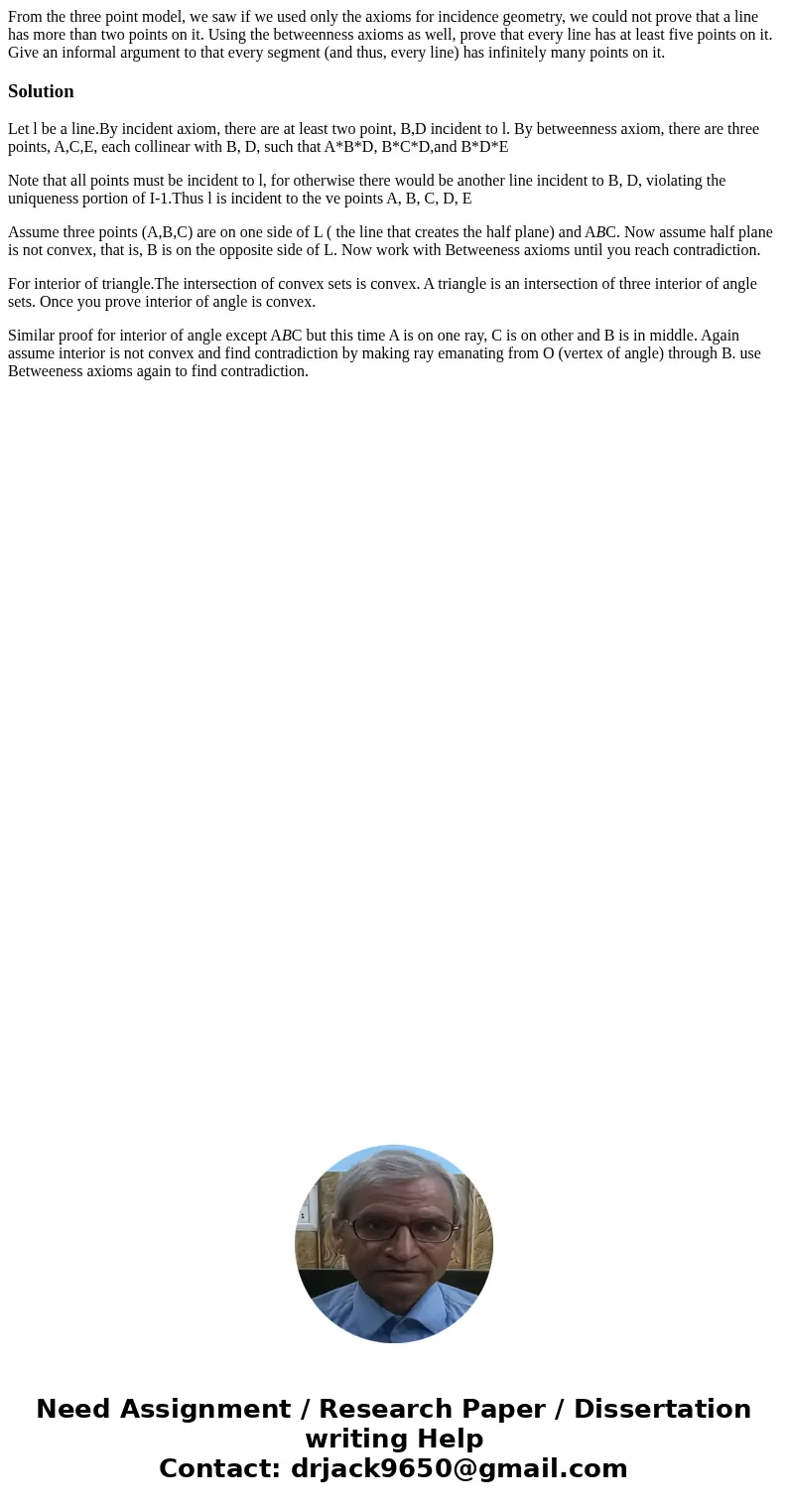From the three point model we saw if we used only the axioms
Solution
Let l be a line.By incident axiom, there are at least two point, B,D incident to l. By betweenness axiom, there are three points, A,C,E, each collinear with B, D, such that A*B*D, B*C*D,and B*D*E
Note that all points must be incident to l, for otherwise there would be another line incident to B, D, violating the uniqueness portion of I-1.Thus l is incident to the ve points A, B, C, D, E
Assume three points (A,B,C) are on one side of L ( the line that creates the half plane) and ABC. Now assume half plane is not convex, that is, B is on the opposite side of L. Now work with Betweeness axioms until you reach contradiction.
For interior of triangle.The intersection of convex sets is convex. A triangle is an intersection of three interior of angle sets. Once you prove interior of angle is convex.
Similar proof for interior of angle except ABC but this time A is on one ray, C is on other and B is in middle. Again assume interior is not convex and find contradiction by making ray emanating from O (vertex of angle) through B. use Betweeness axioms again to find contradiction.

 Homework Sourse
Homework Sourse